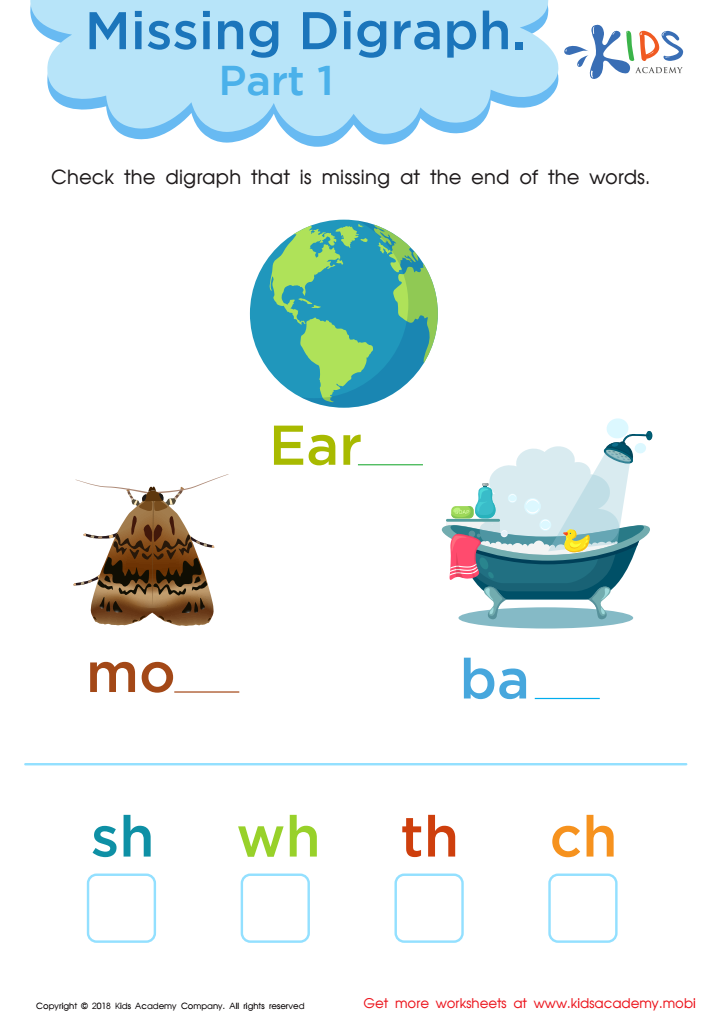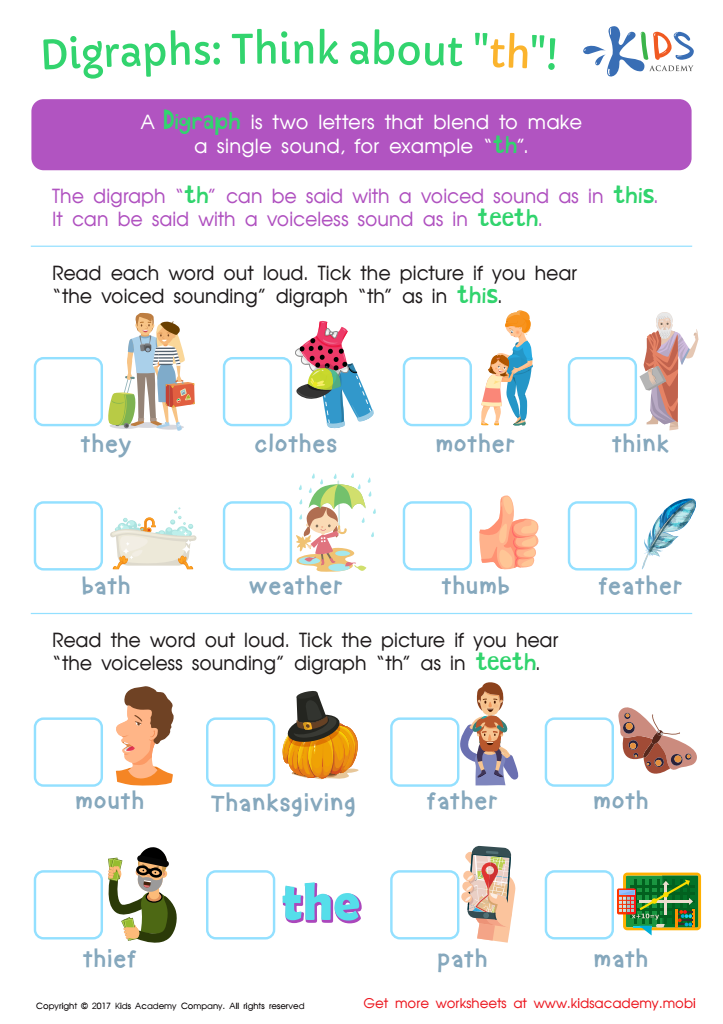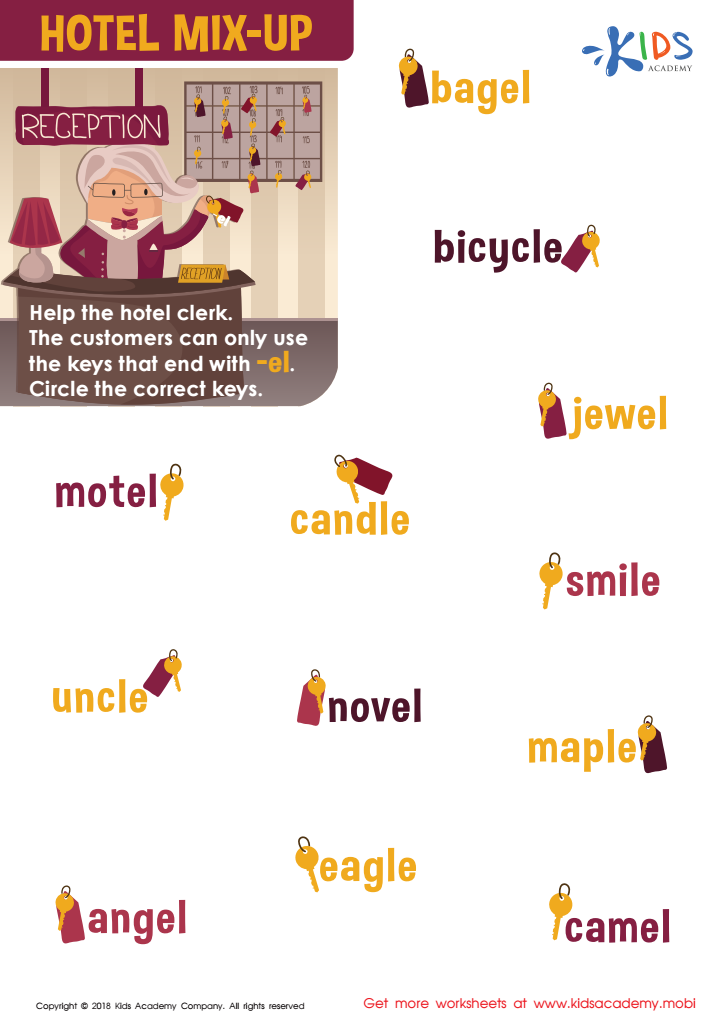Normal Ending Sounds Worksheets for Ages 7-8
3 filtered results
-
From - To
Introducing our "Normal Ending Sounds Worksheets for Ages 7-8", designed to strengthen phonics skills in young learners. These engaging, age-appropriate printables help students identify and practice common ending sounds, building a foundation for strong reading and writing abilities. Perfect for classroom use or at-home practice, each worksheet features fun activities like matching, fill-in-the-blank, and word searches. Crafted by educational experts, these resources are tailored to captivate and challenge students, making learning a joyful experience. Enhance your child’s phonetic proficiency with our expertly crafted ending sounds worksheets, ensuring their academic success and confidence.


Missing Digraph: Part 1 Worksheet


Digraphs: Think About "th" Worksheet


Hotel Mix-up Worksheet
Parents and teachers should pay close attention to normal ending sounds for children aged 7-8 because these sounds are essential to developing strong reading and spelling skills. At this age, children typically begin to transition from basic reading to more complex tasks, such as reading fluently and comprehending text. Mastery of ending sounds enhances their phonemic awareness, allowing them to better recognize, differentiate, and spell words. For instance, distinguishing between the words "bat" and "bad" hinges on accurately hearing and producing the ending sounds, which directly impacts reading comprehension.
Recognition of ending sounds also lays the foundation for future language learning. It helps children understand word families, such as "-ake" in "bake," "rake," and "cake," facilitating vocabulary expansion and pattern recognition. Furthermore, difficulties with ending sounds may inhibit their ability to spell accurately or read fluently, presenting challenges in their educational journey.
Parents and teachers who focus on normal ending sounds through activities like reading aloud, phonics games, and repetitive practice contribute to the child's linguistic confidence and academic success. Ultimately, attention to ending sounds nurtures a child's ability to navigate the intricacies of language, ensuring they build the foundational skills necessary for lifelong learning and communication.
 Assign to My Students
Assign to My Students













